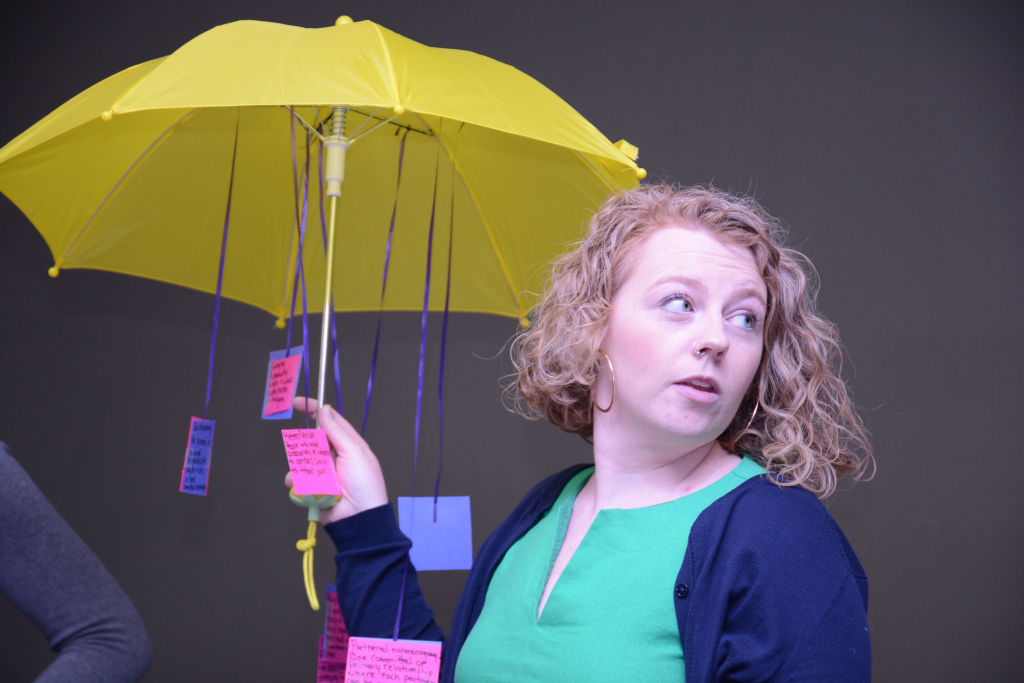
The most frequently asked question from customers of Venus Envy, education oriented sex shop and book store is: “Is what I’m feeling normal?”
When speaking about relationships and how a person chooses to label themselves, if at all, the answer is always yes, according to Sam Whittle, owner of Venus Envy in Ottawa, Ont.
“There’s no such thing as normal,” said Whittle.
Whittle popped open her umbrella, “These are umbrella terms,” she said, illustrating how both bisexuality and polyamory are terms that have many other meanings that fall within them.
Whittle and her colleague Agnes Noblet, assistant manager at Venus Envy, visited Algonquin on March 22 as part of a Pride Week event. They led a discussion on the topic of bisexuality and polyamory— topics that were lumped together through their bond as two of the forgotten and underrepresented identities in the LGBTQ+ community.
“There are a lot of myths and stereotypes in both,” said Noblet, “so I can see how people can associate the two in that way.”
Often bisexuality is cast aside as a non-existent or legitimate identity.
“There’s a study that shows that in the US more people believe in angels and Santa Claus than they do in bisexuals,” said Whittle.
Even within the LGBTQ+ community bisexuality is ostracized for myths that harm the community as a whole. Bisexual is often considered to be a relationship between either a cis-man or cis-woman which has the challenge of reinforcing gender binaries. There is also the assumption that if an individual is anything other than equally attracted to self-identifying males or self-identifying females, then they cannot be bisexual. According to Noblet, we don’t have to live in a world where it’s one or the other.
“It’s ok to be fluid,” said Noblet. “It isn’t up to anyone to label you as anything.”
We don’t typically think of shapes when we consider different relationship structures. In a monogamous relationship there are two people involved, a single line connecting one person to the other. But there are relationships that form a triad, a quad, a V or a bowtie. These shapes refer to a few of the infinitely different types of polyamorous relationships that are out there.
However, discovering where you want to be in that process can be intimidating and scary, especially for those new to a certain way of self-identifying.
“I’m still trying to explore and understand who I am and I’m hoping that this will help answer some questions that I don’t even know I have,” said Lynn Sheppard, a part-time teaching english as a second language student.
The discussion continued in an open suggestion-box-type format where Sheppard and other students were able to get the questions they had answered, and develop new questions.
“I learned so much today that I didn’t even think I was going to learn,” said Sheppard, “I learned a lot of new things, even though it’s not related to me I had a lot of fun.”


